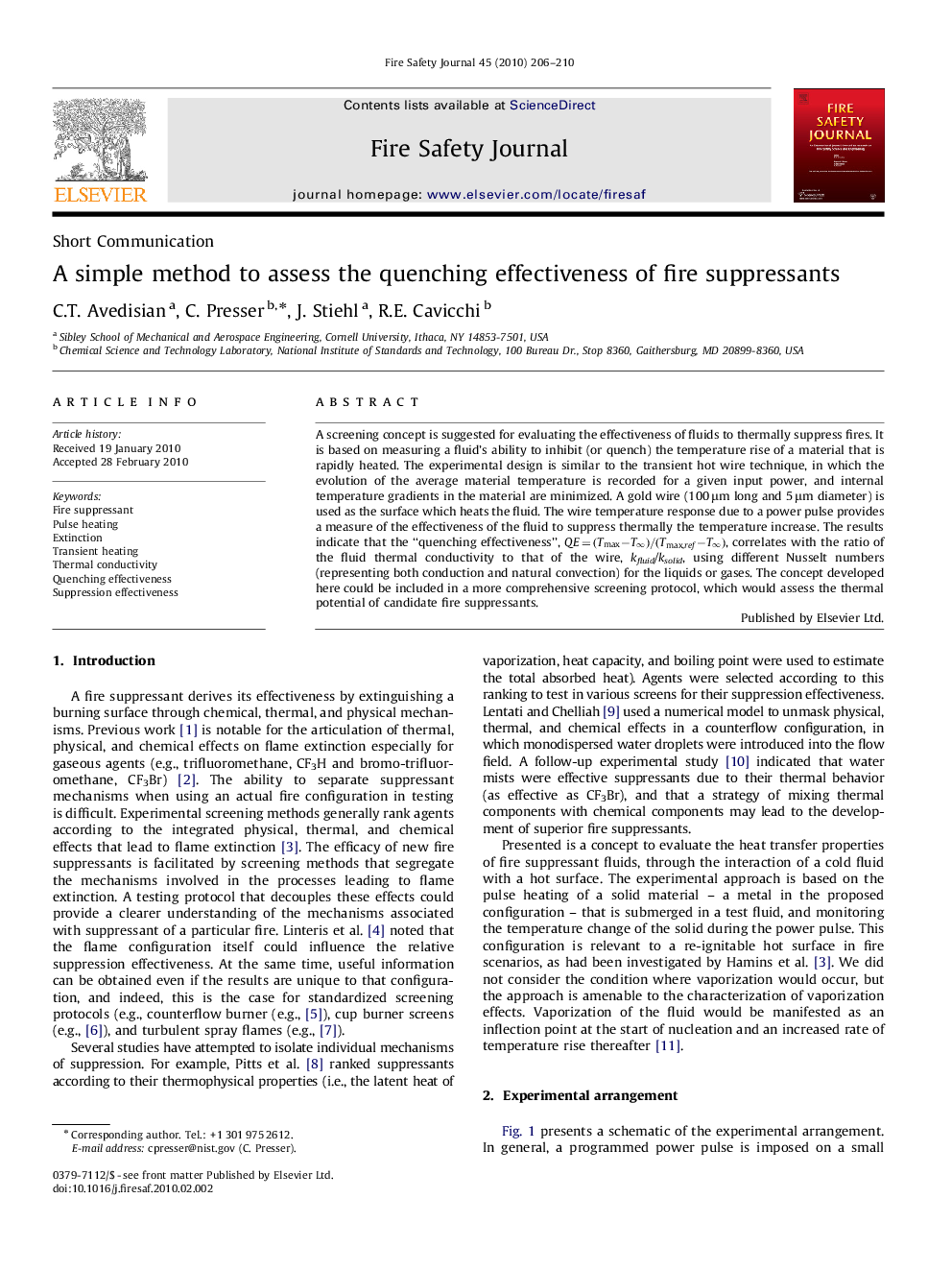| Article ID | Journal | Published Year | Pages | File Type |
|---|---|---|---|---|
| 270262 | Fire Safety Journal | 2010 | 5 Pages |
A screening concept is suggested for evaluating the effectiveness of fluids to thermally suppress fires. It is based on measuring a fluid's ability to inhibit (or quench) the temperature rise of a material that is rapidly heated. The experimental design is similar to the transient hot wire technique, in which the evolution of the average material temperature is recorded for a given input power, and internal temperature gradients in the material are minimized. A gold wire (100 μm long and 5 μm diameter) is used as the surface which heats the fluid. The wire temperature response due to a power pulse provides a measure of the effectiveness of the fluid to suppress thermally the temperature increase. The results indicate that the “quenching effectiveness”, QE=(Tmax−T∞)/(Tmax,ref−T∞)QE=(Tmax−T∞)/(Tmax,ref−T∞), correlates with the ratio of the fluid thermal conductivity to that of the wire, kfluid/ksolid, using different Nusselt numbers (representing both conduction and natural convection) for the liquids or gases. The concept developed here could be included in a more comprehensive screening protocol, which would assess the thermal potential of candidate fire suppressants.
